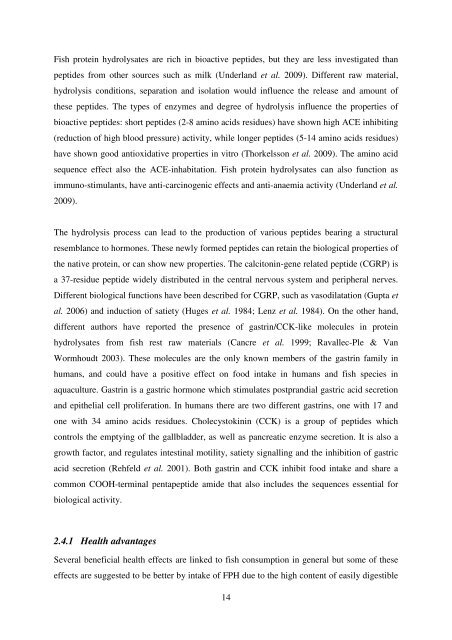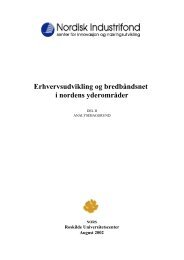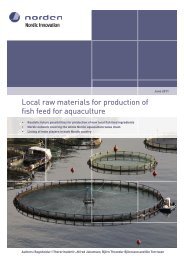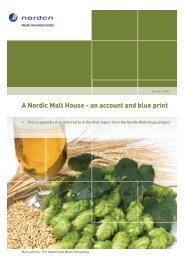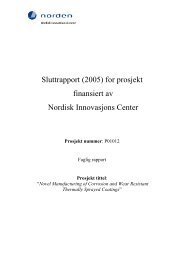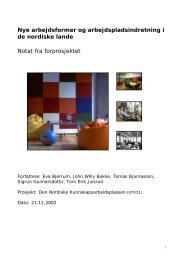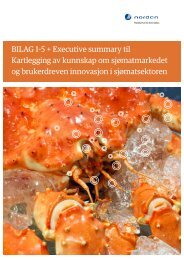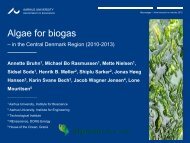Value added fish by-products - Nordic Innovation
Value added fish by-products - Nordic Innovation
Value added fish by-products - Nordic Innovation
Create successful ePaper yourself
Turn your PDF publications into a flip-book with our unique Google optimized e-Paper software.
Fish protein hydrolysates are rich in bioactive peptides, but they are less investigated than<br />
peptides from other sources such as milk (Underland et al. 2009). Different raw material,<br />
hydrolysis conditions, separation and isolation would influence the release and amount of<br />
these peptides. The types of enzymes and degree of hydrolysis influence the properties of<br />
bioactive peptides: short peptides (2-8 amino acids residues) have shown high ACE inhibiting<br />
(reduction of high blood pressure) activity, while longer peptides (5-14 amino acids residues)<br />
have shown good antioxidative properties in vitro (Thorkelsson et al. 2009). The amino acid<br />
sequence effect also the ACE-inhabitation. Fish protein hydrolysates can also function as<br />
immuno-stimulants, have anti-carcinogenic effects and anti-anaemia activity (Underland et al.<br />
2009).<br />
The hydrolysis process can lead to the production of various peptides bearing a structural<br />
resemblance to hormones. These newly formed peptides can retain the biological properties of<br />
the native protein, or can show new properties. The calcitonin-gene related peptide (CGRP) is<br />
a 37-residue peptide widely distributed in the central nervous system and peripheral nerves.<br />
Different biological functions have been described for CGRP, such as vasodilatation (Gupta et<br />
al. 2006) and induction of satiety (Huges et al. 1984; Lenz et al. 1984). On the other hand,<br />
different authors have reported the presence of gastrin/CCK-like molecules in protein<br />
hydrolysates from <strong>fish</strong> rest raw materials (Cancre et al. 1999; Ravallec-Ple & Van<br />
Wormhoudt 2003). These molecules are the only known members of the gastrin family in<br />
humans, and could have a positive effect on food intake in humans and <strong>fish</strong> species in<br />
aquaculture. Gastrin is a gastric hormone which stimulates postprandial gastric acid secretion<br />
and epithelial cell proliferation. In humans there are two different gastrins, one with 17 and<br />
one with 34 amino acids residues. Cholecystokinin (CCK) is a group of peptides which<br />
controls the emptying of the gallbladder, as well as pancreatic enzyme secretion. It is also a<br />
growth factor, and regulates intestinal motility, satiety signalling and the inhibition of gastric<br />
acid secretion (Rehfeld et al. 2001). Both gastrin and CCK inhibit food intake and share a<br />
common COOH-terminal pentapeptide amide that also includes the sequences essential for<br />
biological activity.<br />
2.4.1 Health advantages<br />
Several beneficial health effects are linked to <strong>fish</strong> consumption in general but some of these<br />
effects are suggested to be better <strong>by</strong> intake of FPH due to the high content of easily digestible<br />
14


